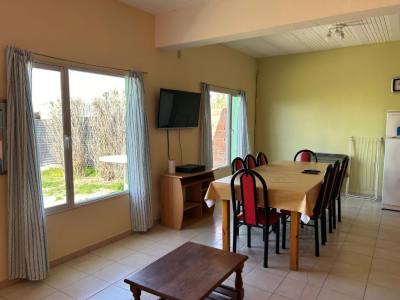
We visited the Oil Museum and learned about the origin of this important hydrocarbon.
As expected, we visited the Oil Museum during our stay in
Comodoro Rivadavia. As it lies close to Well #2, from where the first oil spurt in our country sprang, it is considered a “site museum”. The show displays the history of crude ever since its formation to its present exploitation and industrialization. This museum was created by the Board of Directors of
Yacimientos Petrolíferos Fiscales in 1987. As the company passed onto private hands, the museum was transferred to
Universidad de la Patagonia. This institution would be in charge of carrying on with the mission of spreading the information about the origin of oil in the country. The exploit of the discovery of this precious hydrocarbon in the city is revived during the tour.

The museum has an outdoor and an indoor area. The former displays the phases of oil exploitation. Through the various pieces such as machinery, tools, equipments and materials, visitors acquire the basic notions of the industry. The original Fauck Express driller may be appreciated in this area. This item reached the point where the first spurt of crude oil sprang on December 13 –declared National Oil Day in Argentina. In the indoor area, in the chamber that is part of the museum, we learned about the evolution of the Earth, the fossils, the dinosaurs and the origin of oil.

Afterwards, we passed onto a historical room, which deals with the subject of the discovery of the “black gold” in Comodoro Rivadavia and the first main characters that encouraged its exploitation, laying out the various oil basins in Argentina. Various scale models of important distilleries located all through the country complete the exhibition along with other elements such as ancient pumps and a Ford T, fireproof suits, photographs, letters and telegrams from those days. It is important to point out that this museum in Comodoro Rivadavia is the largest in the country as far as oil is concerned and one of the most important in the world, together with the USA and the Russian museums.

As we moved about the venue, a feeling of nostalgia invaded us. Imagining the tremendous task carried out in these southern latitudes over a hundred years ago when the means of transportation and communication were very primitive in comparison with modern technology. It was very hard. But in spite of this adversity and the harshness of the weather and the cold temperatures, visionary men such as Figueroa Alcorta, General Mosconi, Julio Krause, Humberto Beschier or José Fuchs –to name a few– managed to conceive an Argentina with oil, a country that may produce its own fuel in order to be a prosperous place with industries and job positions. It is a pity that those legacies seem to have been thrown into oblivion and that they are only revived for a few moments on a tour around the Oil Museum in this city.





























